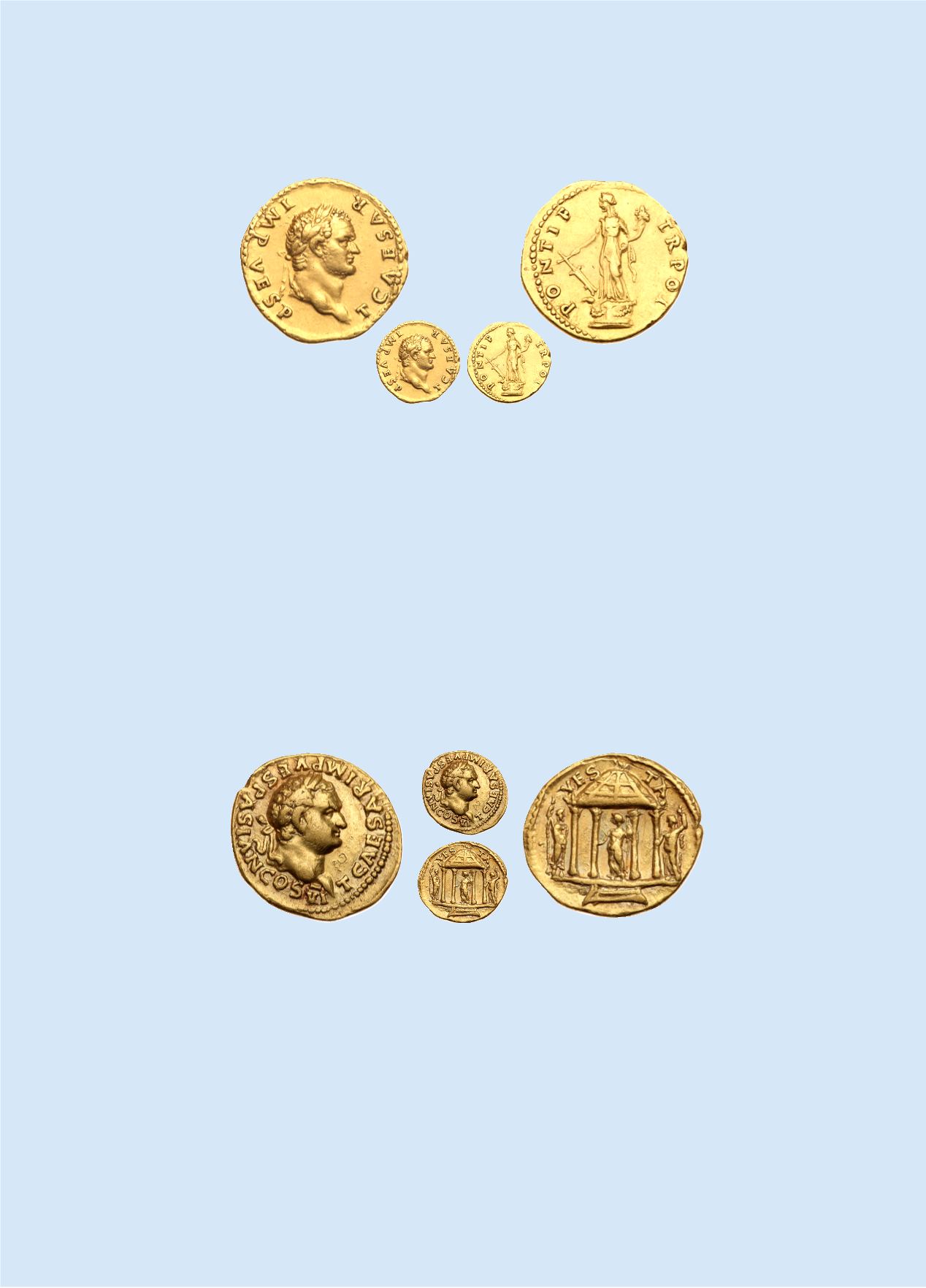

Wonderful Titus Gold Aureus as Caesar
1217
Titus. Gold Aureus (7.22 g), as Caesar, AD 69-79. Rome, under Vespasian, AD 74. T CAESAR IMP VESP,
PONTIF TR POT, Fortuna standing facing, head left on garlanded cippus decorated with rams’ heads,
holding rudder and cornucopiae. (RIC 696; BN 127; BMC 153; Calicó 751). Boldly struck and well centered.
Excellent portrait of Titus. Nearly extremely fine.
$ 6,000
Fortuna, the Roman personification of fortune or luck (good or bad), is appropriate for the reverse of this coin since it was really
through her that the Flavian family rose to imperial power in the later 1
st
century AD. She oversaw Vespasian’s position of being the
last man standing at the end of the civil wars that wracked Rome after the death of Nero, and she also saw that Titus was left to finish
the repression of the Jewish Revolt (AD 66-73). The plunder that he carried home from the Jerusalem Temple won him great glory
in Rome and paid for the building of the Colosseum. It was also Fortuna who, in the context of the Jewish Revolt, brought passion
to Titus in the form of the Herodian queen, Berenice. Unfortunately, the romance between the two was publicly condemned and
Titus, unable to bear the pressure, at last sent Berenice away. Yet this simply illustrates the fickleness of Fortuna: while she could give
many great and wonderful things, sometimes she would give just so that she could take away again.
Unique Titus Gold Aureus
1218
Titus. Gold Aureus (7.31 g), as Caesar, AD 69-79. Lugdunum(?), under Vespasian, AD 77/8. T CAESAR
IMP VESPASIAN COS VI, laureate head of Titus right. Rev. VES-TA, tetrastyle Temple of Vesta with a
round-dome and approached by four steps; within, statue of Vesta standing facing, head left, holding long
scepter, flanked to either side by two additional statues. (RIC -; BN -; BMC -; Calicó -). Well struck in high
relief with light toning.
A completely new legend for Titus. Unique.
Choice very fine.
$ 10,000
This unique coin features a somewhat incongruous type combination featuring an apparently unique legend for this denomination
dating it to AD 77/8 with a reverse type depicting the Temple of Vesta otherwise known to have been struck for Vespasian and
Domitian only in AD 73 and 74. The obverse style and serifs of the lettering may suggest a Lugdunum product, but the combination
is difficult to explain. The coin may perhaps represent a mule involving an otherwise unrecorded obverse die.



















